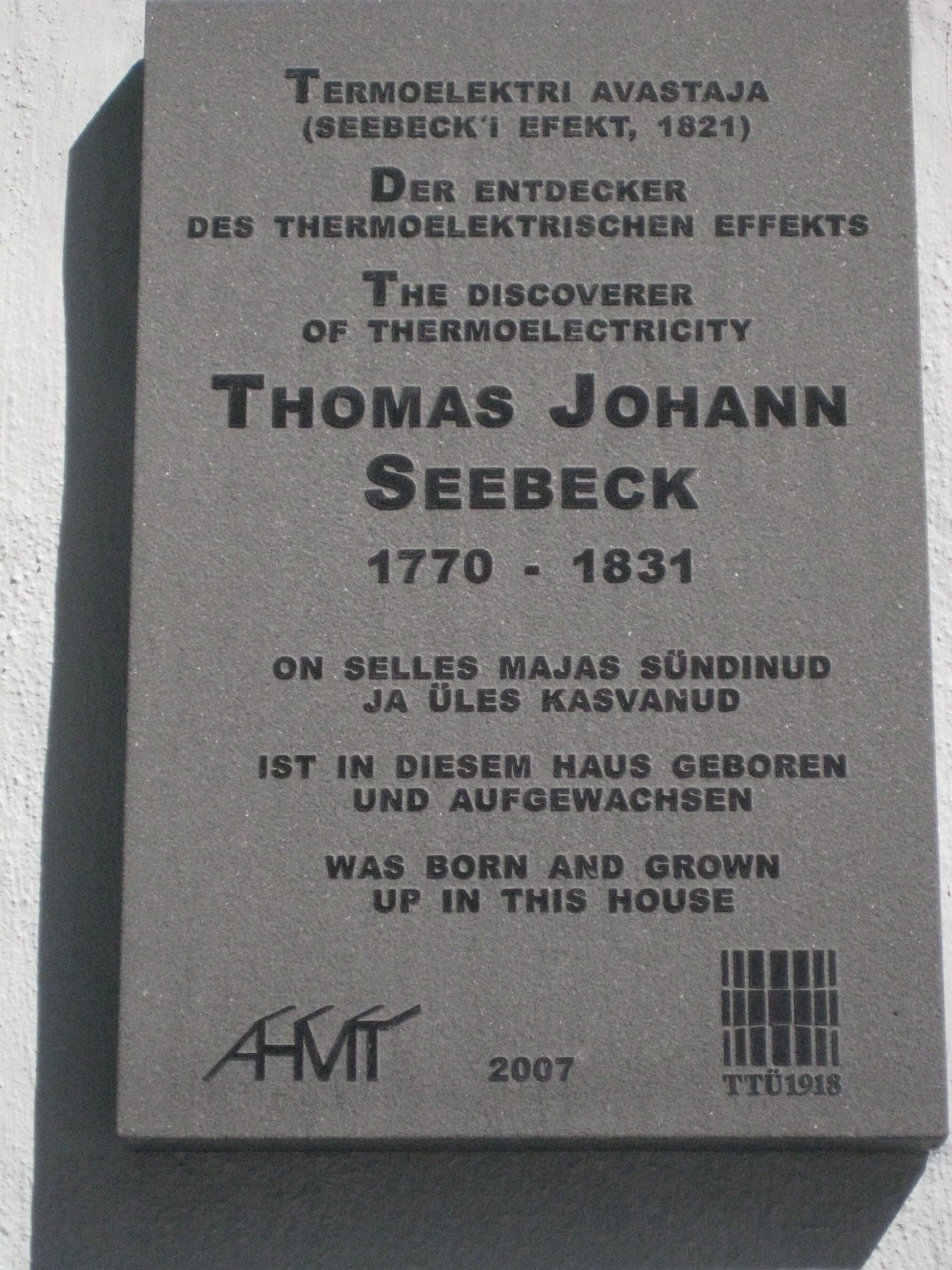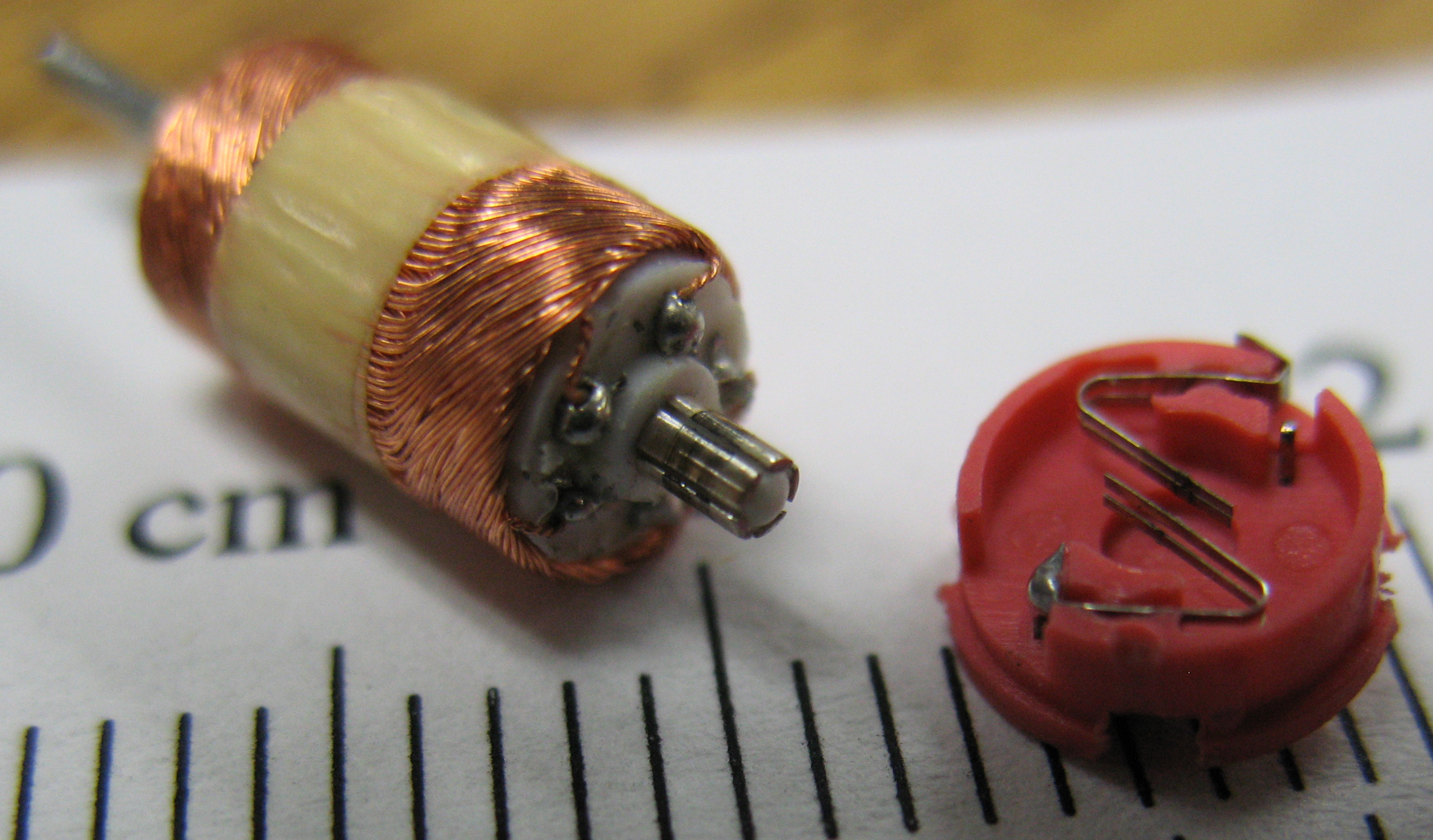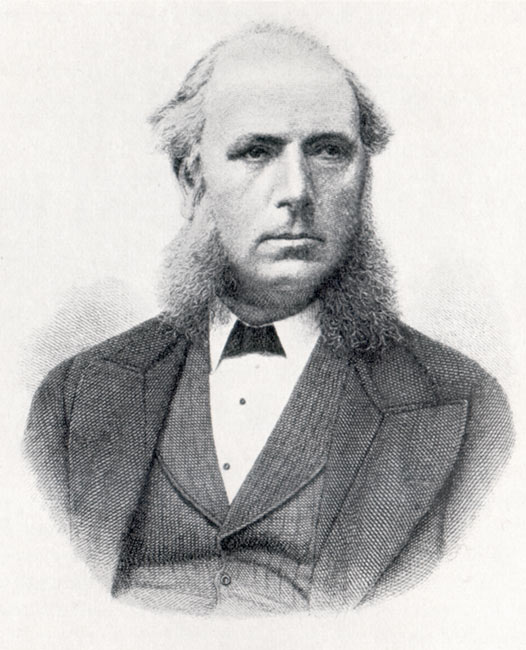|
Arago's Rotations
Arago's rotations is an observable magnetic phenomenon that involves the interactions between a magnetized needle and a moving metal disk. The effect was discovered by François Arago in 1824. At the time of their discovery, Arago's rotations were surprising effects that were difficult to explain. In 1831, Michael Faraday introduced the theory of electromagnetic induction, which explained how the effects happen in detail. History Early observations and publications As has so often occurred in other branches of science, the discovery of the magnetic rotations was made nearly simultaneously by several persons, for all of whom priority has been claimed. About 1824, Gambey the celebrated instrument-maker of Paris, had made the casual observation that a compass-needle, when disturbed and set oscillating around its pivot, comes to rest sooner if the bottom of the compass-box is of copper than if it is of wood or other material. Barlow and Marsh, at Woolwich, had at the same time been ... [...More Info...] [...Related Items...] OR: [Wikipedia] [Google] [Baidu] |
Arago Spinning Disk
Arago may refer to: People * Aragó, a family name of the kings of the Aragonese Crown * Étienne Arago (1802–1892), French journalist, theater director, and politician; brother of Juan, François, and Jacques * François Arago (1786–1853), French mathematician, physicist, astronomer, and politician; brother of Juan, Jacques, and Étienne * Jacques Arago (1790–1855), French writer, artist and explorer; brother of Juan, François, and Étienne * Josep Riera i Aragó (born 1954), Catalan artist * Marie Arago (1755–1845), French mother of the six Arago brothers Places Earth *Aragó, the name for Aragon in Catalan * Arago, Oregon, United States, an unincorporated community *Arago Township, Minnesota, United States *Cape Arago, Cape Arago State Park, Oregon, United States *Arago Glacier, Graham Land, Antarctica * Arago cave, Tautavel, France, a site where prehistoric remains of Tautavel Man were discovered *Arago hotspot, a geological hotspot near the Arago seamount in the ... [...More Info...] [...Related Items...] OR: [Wikipedia] [Google] [Baidu] |
Thomas Johann Seebeck
Thomas Johann Seebeck (; 9 April 1770 – 10 December 1831) was a Baltic German physicist, who, in 1822, observed a relationship between heat and magnetism. Later, in 1823, Ørsted called this phenomenon thermoelectric effect. Seebeck was born in Reval (today Tallinn) to a wealthy Baltic German merchant family. He received a medical degree in 1802 from the University of Göttingen, but preferred to study physics. From 1821 to 1823, Seebeck performed a series of experiments trying to understand Ørsted's findings from 1820. During his experiments, he observed that a junction of dissimilar metals produces a deflexion on a magnetic needle (compass) when exposed to a temperature gradient. Because Ørsted had discovered that an electric current produces a deflexion on a compass transversal to the wire, Seebeck's results were interpreted as a thermoelectric effect. This is now called the Peltier–Seebeck effect and is the basis of thermocouples and thermopiles. Seebeck effect ... [...More Info...] [...Related Items...] OR: [Wikipedia] [Google] [Baidu] |
Faraday Disc
A homopolar generator is a DC electrical generator comprising an electrically conductive disc or cylinder rotating in a plane perpendicular to a uniform static magnetic field. A potential difference is created between the center of the disc and the rim (or ends of the cylinder) with an electrical polarity that depends on the direction of rotation and the orientation of the field. It is also known as a unipolar generator, acyclic generator, disk dynamo, or Faraday disc. The voltage is typically low, on the order of a few volts in the case of small demonstration models, but large research generators can produce hundreds of volts, and some systems have multiple generators in series to produce an even larger voltage. They are unusual in that they can source tremendous electric current, some more than a million amperes, because the homopolar generator can be made to have very low internal resistance. Also, the homopolar generator is unique in that no other rotary electric machine can pr ... [...More Info...] [...Related Items...] OR: [Wikipedia] [Google] [Baidu] |
Magnetic Damping
Magnetic damping is a form of damping that occurs when a magnetic field (i.e. a magnet) travels some distance through or past an electrical conductor (or vice versa). Definition When a magnetic field moves through a conductor the movement induces an eddy current in the conductor. The flow of electrons in the conductor immediately creates an opposing magnetic field which results in damping of the magnet and produces heat inside the conductor similar to heat buildup inside of a power cord during use. The amount of energy transferred to the conductor in the form of heat is equal to the change in kinetic energy lost by the magnet – the greater the loss of kinetic energy of a magnet (a product of its mass and speed), the greater the heat buildup in the conductor and the more forceful the damping effect. Eddy currents induced in conductors are much stronger as temperatures approach cryogenic levels. This allows for critical damping for cryogenic applications and testing in the aerospac ... [...More Info...] [...Related Items...] OR: [Wikipedia] [Google] [Baidu] |
Eddy Current Brake
An eddy current brake, also known as an induction brake, electric brake or electric retarder, is a device used to slow or stop a moving object by generating eddy currents and thus dissipating its kinetic energy as heat. Unlike friction brakes, where the drag force that stops the moving object is provided by friction between two surfaces pressed together, the drag force in an eddy current brake is an electromagnetic force between a magnet and a nearby conductive object in relative motion, due to eddy currents induced in the conductor through electromagnetic induction. A conductive surface moving past a stationary magnet develops circular electric currents called eddy currents induced in it by the magnetic field, as described by Faraday's law of induction. By Lenz's law, the circulating currents create their own magnetic field that opposes the field of the magnet. Thus the moving conductor experiences a drag force from the magnet that opposes its motion, proportional to its v ... [...More Info...] [...Related Items...] OR: [Wikipedia] [Google] [Baidu] |
Eddy Current
Eddy currents (also called Foucault's currents) are loops of electrical current induced within conductors by a changing magnetic field in the conductor according to Faraday's law of induction or by the relative motion of a conductor in a magnetic field. Eddy currents flow in closed loops within conductors, in planes perpendicular to the magnetic field. They can be induced within nearby stationary conductors by a time-varying magnetic field created by an AC electromagnet or transformer, for example, or by relative motion between a magnet and a nearby conductor. The magnitude of the current in a given loop is proportional to the strength of the magnetic field, the area of the loop, and the rate of change of flux, and inversely proportional to the resistivity of the material. When graphed, these circular currents within a piece of metal look vaguely like eddies or whirlpools in a liquid. By Lenz's law, an eddy current creates a magnetic field that opposes the change in the magnet ... [...More Info...] [...Related Items...] OR: [Wikipedia] [Google] [Baidu] |
Ruhmkorff Commutator
A commutator is a rotary electrical switch in certain types of electric motors and electrical generators that periodically reverses the current direction between the rotor and the external circuit. It consists of a cylinder composed of multiple metal contact segments on the rotating armature of the machine. Two or more electrical contacts called " brushes" made of a soft conductive material like carbon press against the commutator, making sliding contact with successive segments of the commutator as it rotates. The windings (coils of wire) on the armature are connected to the commutator segments. Commutators are used in direct current (DC) machines: dynamos (DC generators) and many DC motors as well as universal motors. In a motor the commutator applies electric current to the windings. By reversing the current direction in the rotating windings each half turn, a steady rotating force (torque) is produced. In a generator the commutator picks off the current generated in ... [...More Info...] [...Related Items...] OR: [Wikipedia] [Google] [Baidu] |
Willoughby Smith
Willoughby Smith (6 April 1828, in Great Yarmouth, Norfolk – 17 July 1891, in Eastbourne, Sussex) was an English electrical engineer who discovered the photoconductivity of the element selenium. This discovery led to the invention of photoelectric cells, including those used in the earliest television systems. Career In 1848, he began working for the Gutta Percha Company, London where he developed iron and copper wires insulated with gutta-percha to be used for telegraph wires. In 1850, Smith superintended the manufacture and laying of 30 miles of underwater telegraph wire from Dover to Calais. Though the first cable failed almost immediately, another laid the following year was a success and over the following decades, Smith and the company he worked for were involved with many other underwater telegraph cable projects. In 1866, Smith developed a method for continually testing an underwater cable as it was being laid. For his test circuit, he needed a semi-conducting materi ... [...More Info...] [...Related Items...] OR: [Wikipedia] [Google] [Baidu] |
Léon Foucault
Jean Bernard Léon Foucault (, ; ; 18 September 1819 – 11 February 1868) was a French physicist best known for his demonstration of the Foucault pendulum, a device demonstrating the effect of Earth's rotation. He also made an early measurement of the speed of light, discovered eddy currents, and is credited with naming the gyroscope. Early years The son of a publisher, Foucault was born in Paris on 18 September 1819. After an education received chiefly at home, he studied medicine, which he abandoned in favour of physics due to a blood phobia. He first directed his attention to the improvement of Louis Daguerre's photographic processes. For three years he was experimental assistant to Alfred Donné (1801–1878) in his course of lectures on microscopic anatomy. With Hippolyte Fizeau he carried out a series of investigations on the intensity of the light of the sun, as compared with that of carbon in the arc lamp, and of lime in the flame of the oxyhydrogen blowpipe; on th ... [...More Info...] [...Related Items...] OR: [Wikipedia] [Google] [Baidu] |
Heinrich Hertz
Heinrich Rudolf Hertz ( ; ; 22 February 1857 – 1 January 1894) was a German physicist who first conclusively proved the existence of the electromagnetic waves predicted by James Clerk Maxwell's equations of electromagnetism. The unit of frequency, cycle per second, was named the "hertz" in his honor.IEC History . Iec.ch. Biography Heinrich Rudolf Hertz was born in 1857 in , then a sovereign state of the German Confederation, into a prosperous and cultured Hanseatic family. His father was[...More Info...] [...Related Items...] OR: [Wikipedia] [Google] [Baidu] |
Carlo Matteucci
Carlo Matteucci (20 or 21 June 1811 – 25 June 1868) was an Italian physicist and neurophysiologist who was a pioneer in the study of bioelectricity. Biography Carlo Matteucci was born at Forlì, in the province of Romagna, to Vincenzo Matteucci, a physician, and Chiara Folfi. He studied mathematics at the University of Bologna from 1825 to 1828, receiving his doctorate in 1829. From 1829 to 1831, he studied at the École Polytechnique in Paris, France. Upon returning to Italy, Matteucci studied at Bologna (1832), Florence, Ravenna (1837) and Pisa. He established himself as the head of the laboratory of the Hospital of Ravenna and became a professor of physics at the local college. In 1840, by recommendation of François Arago (1786–1853), his teacher at the École Polytechnique, to the Grand-Duke of Tuscany, Matteucci accepted a post of professor of physics at the University of Pisa. Instigated by the work of Luigi Galvani (1737–1798) on bioelectricity, Matteucci b ... [...More Info...] [...Related Items...] OR: [Wikipedia] [Google] [Baidu] |
Eddy Current
Eddy currents (also called Foucault's currents) are loops of electrical current induced within conductors by a changing magnetic field in the conductor according to Faraday's law of induction or by the relative motion of a conductor in a magnetic field. Eddy currents flow in closed loops within conductors, in planes perpendicular to the magnetic field. They can be induced within nearby stationary conductors by a time-varying magnetic field created by an AC electromagnet or transformer, for example, or by relative motion between a magnet and a nearby conductor. The magnitude of the current in a given loop is proportional to the strength of the magnetic field, the area of the loop, and the rate of change of flux, and inversely proportional to the resistivity of the material. When graphed, these circular currents within a piece of metal look vaguely like eddies or whirlpools in a liquid. By Lenz's law, an eddy current creates a magnetic field that opposes the change in the magnet ... [...More Info...] [...Related Items...] OR: [Wikipedia] [Google] [Baidu] |





